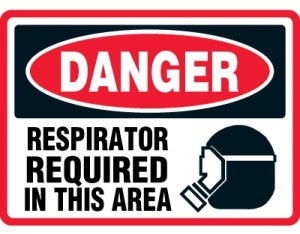Danger is in the Air: Choosing the Right Respirators
Most industries and businesses involve work processes and environments that are potentially dangerous to your respiratory system. Chemical plants, mining sites, and other similar facilities often produce by-products such as harmful fumes and excessive dust that, if inhaled, may pose health problems. Now, if you can’t ditch work, but coming in means facing loads of air-borne hazards, how do you protect yourself?
When danger is literally in the air, respirators are what you need, aside from safety signs. In fact, respirators and respirator signs are part of OSHA’s Respiratory Protection Standard. As an employer, you are required to develop a respiratory protection program in your facility. If you still do not have one going on, you better start one now.
There are tons of things to remember though when it comes to choosing respirators. To help get you started and keep you on the right path, here are some points from the Occupational Safety and Health Administration you would remember well:
- One size does not fit all – Respirator brands have their own fit characteristics. Some people may get an adequate fit with particular respirator models or types, while some may not. Make sure you have different respirator types, models and sizes available in your facility, so that everyone may get a perfect fit. Keep in mind that you’re dealing with air-borne hazards — a respirator’s fit may mean life or death.
- “Universal respirator” is a myth – Respirators range from filtering facepieces and gas masks to airline respirators and self-contained breathing apparatuses. Each respirator type works best under certain conditions. To select the proper respirators for your facility, you have to determine the hazard and its extent first. You should also consider user mobility and work requirements.
- NIOSH got it all – Your respirators must pass the National Institute for Occupational Safety and Health (NIOSH) standards to be safe. The best way to go about this is to choose only from NIOSH-approved respirators. The N95 respirator is perhaps the most popular facepiece respirator, and NIOSH regularly updates their list of manufacturers compliant with their standards.
Respiratory protection programs are not just about the right respirators. You also need a qualified program administrator, who will oversee the program, as well as conduct trainings and medical evaluations. Remind your employees of your policies by putting up respirator signs and other PPE signs around your facility. Make sure you post danger signs, caution signs, and notice signs to alert them to hazardous settings and prompt them to wear respirators. After all, respirators, no matter how well-made and NIOSH-compliant, are kind of pointless if not worn at the right moment.
###
Connect with Hazel Evangelista on Google+
Editor’s Note: What kind of respirators do you use in your workplace? Let us know in the comments section below.


